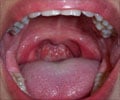Diagnosis of Adult-Onset Still’s Disease
Diagnosis of AOSD is confirmed with blood tests and imaging tests.
Adult-onset Still’s disease is complex to diagnose because of the similarity to other diseases such as Crohn’s disease, Lyme disease, among others. Certain symptoms of AOSD also resemble cancers such as leukemia and lymphoma. The first step to diagnose AOSD is to take a history along with a medical exam of the patient. The doctor often recommends blood tests to eliminate the possibility of other diseases. Blood tests of patients with AOSD demonstrate the following factors:
- High levels of C-reactive protein
- Elevated levels of glycosylated ferritin
- Elevated levels of white blood cell count and reduced levels of red blood cell count
- Elevated levels of IL-6, IL-18, INF-¡
- Elevated levels of enzymes of the liver
- Absence of rheumatoid factor
- Elevated erythrocyte sedimentation rate (ESR)
Imaging tests (eg, X-rays, ultrasound, CT) identify the extent of damage within the body due to AOSD. Imaging tests can identify the following conditions:

- Inflammation of joints
- Inflammation of the abdomen
- Enlarged spleen
- Buildup of fluid between the chest cavity and the lining of lungs (pleural effusion)
- Inflammation of the lining of the heart (pericarditis)








